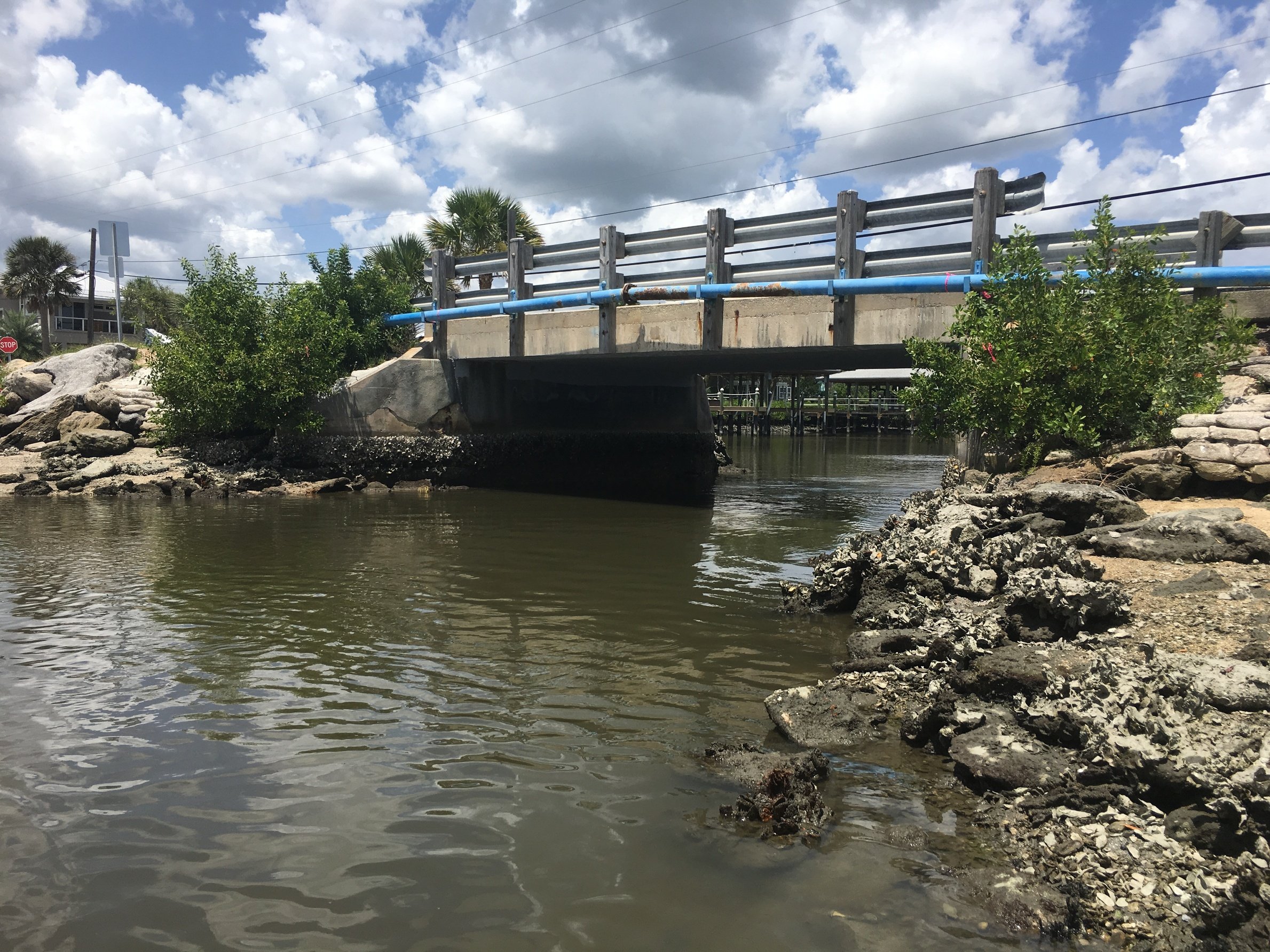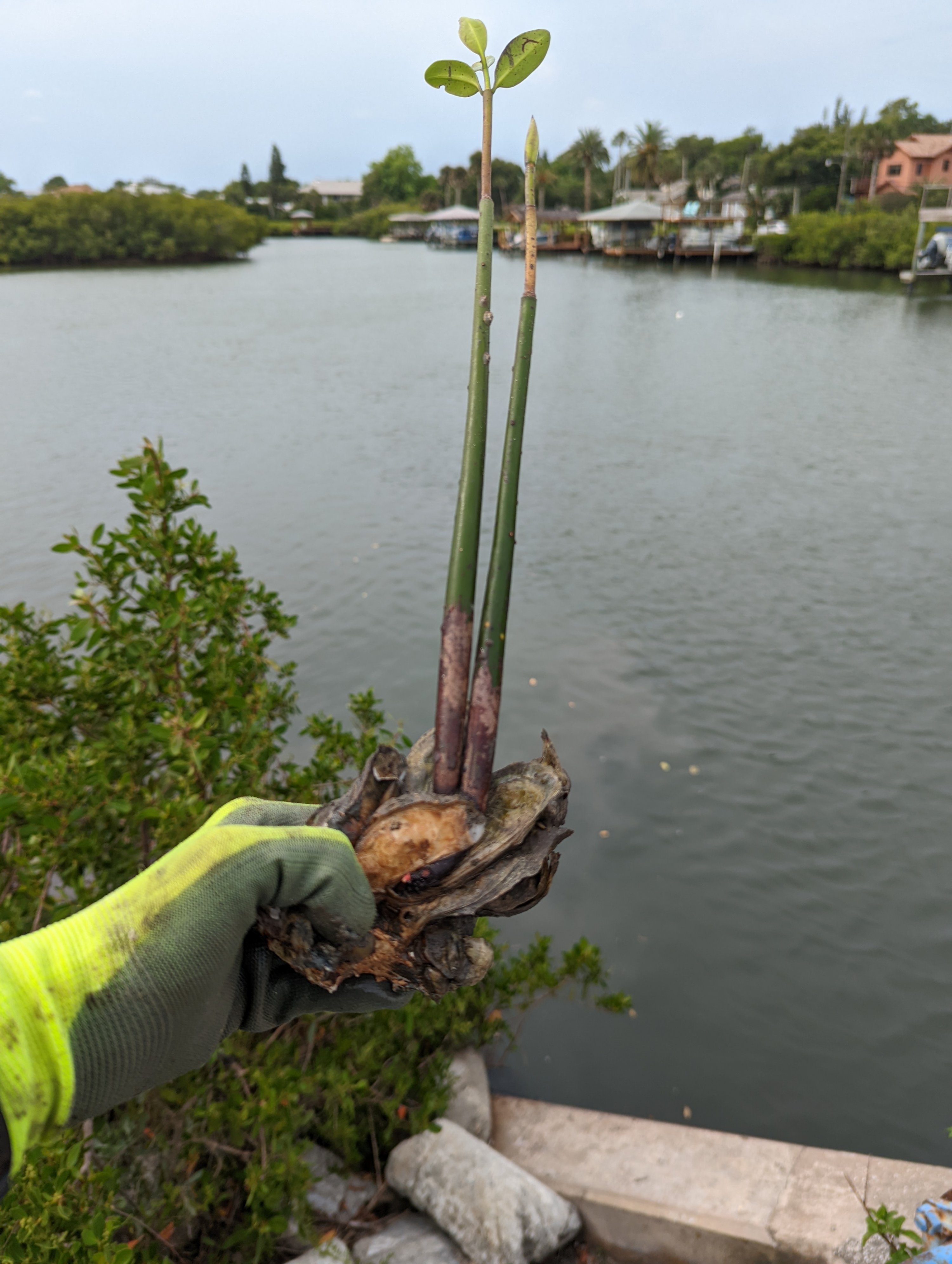The City of New Smyrna Beach, Fla., hired DRMP to redesign the 5th Street Bridge, which provides the only vehicle access from the mainland to the historic Smyrna Yacht Club and the island’s residences.
DRMP’s new bridge design will widen the channel through Yacht Club Cut and restore water flows under this causeway back to what they were prior to the construction of the original bridge in 1965.
As part of the project, our firm’s Environmental Services Group designed a living shoreline and relocated oyster beds and mangroves in the project area to approximately 3 acres of wetlands to mitigate impacts associated with the bridge replacement.

The mangrove and oyster restoration provides a variety of critical ecosystem services to coastal communities within the Indian River Lagoon. The living shoreline improves water quality and clarity as it filters feed, lessens shoreline erosion, and provides a habitat or food source for a wide variety of birds, fish, and invertebrates.
We worked with biologists from the University of Central Florida (UCF) and the Florida Fish and Wildlife Conservation Commission (FWC) to create a living shoreline located 3.9 miles north of the 5th Street Bridge Replacement project and adjacent to an existing St. Johns River Water Management District (SJRWMD) mitigation area.
The oysters and mangroves were relocated to the preservation area prior to the bridge’s construction. DRMP’s team will monitor the site to assess oyster and mangrove survival during the wet and dry seasons within the first year.
Estuarine wetlands within the preservation area include mangrove swamps and benthic habitats essential for fish, spiny lobster, snapper, grouper, and shrimp. The area also is within a manatee protection zone.

Protecting Aquatic Species and Habitat
The waterway was once a popular spot for international travelers and boat races.
Established in 1928, the Smyrna Yacht Club made history in 1932 after it sponsored an international regatta that drew boat racing enthusiasts from England, France, Germany, Italy, Sweden, and Cuba. The regatta landed the club one of only 12 Lipton Cup trophies deeded to clubs around the United States by tea magnate Sir Thomas Lipton.
The original bridge to the yacht club is being replaced with a longer 160-foot, three-span bridge, which will open the waterway and restore the water flow to pre-1965 conditions. It is anticipated that expanding the width of the bridge will restore water flows back to historical conditions and bring several environmental benefits to the Indian River.
By comparison, the current bridge is a single span structure measuring 31 feet across. DRMP’s initial design of the bridge was a match in size of the current bridge. However, after evaluating the requests from the regulatory agencies and residents during a public meeting, our firm went back and conducted an environmental review to assess the ecological benefits supporting constructing a longer bridge.

Our environmental review included the identification of protected species that would benefit with the construction of a longer bridge, including manatees, sea turtles, and small tooth sawfish.
DRMP’s Environmental Services Group staff was responsible for conducting wetland delineation, wildlife surveys, seagrass and mangrove surveys, permitting, mitigation plan design and development, and obtaining environmental clearances from various agencies for this bridge replacement project.

Coordination Key Among Agencies and DRMP’s Divisions
This project required significant coordination for mitigation and environmental permitting between several agencies, including the U.S. Coast Guard (USCG), National Marine Fisheries Services (NOAA), St. Johns River Water Management District (SJRWMD), Florida Fish and Wildlife Conservation Commission (FWC), Florida Department of Environmental Protection (FDEP), U.S. Fish and Wildlife Service (USFWS), U.S. Environmental Protection Agency (EPA), and the U.S. Army Corps of Engineers (USACE). This project also included a Project Development and Environment (PD&E) study to meet the requirements of the National Environmental Policy Act (NEPA).
Being a part of a bridge replacement project that is rich in history, involves the restoration of critical marine habitat for the Indian River Lagoon, and the development of solutions to the concerns of many stakeholders, has made this project incredibly rewarding.

















